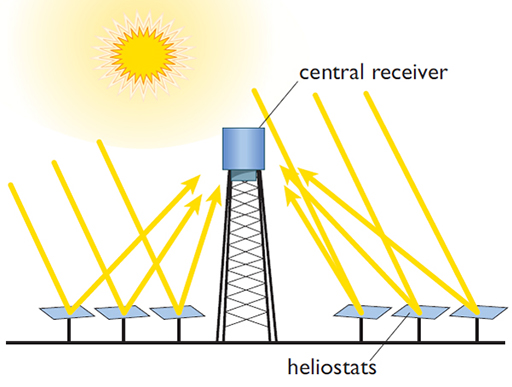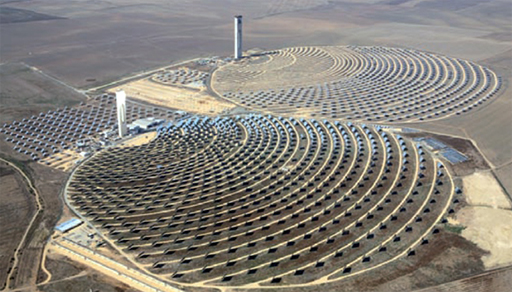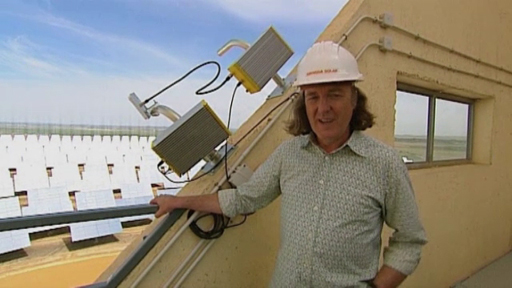9.1 Power towers
Since the early 1980s a number of large, experimental solar thermal electricity generation schemes have been built to generate very high temperatures. Several are of the ‘power tower’ type, shown in Figure 224. These use a large array of steerable ‘heliostats’ (large mirrors) on the ground to focus the Sun’s rays onto a central receiver at the top of a tower.

The receiver is a chamber where either steam is produced directly, or a heat transfer fluid such as mineral oil or molten salt is raised to a high temperature, to be pumped away to generate steam at ground level. The steam is then used to drive a turbine to generate electricity.
Figure 25 shows two Power Tower plants near Seville in southern Spain, the 11 MW Planta Solar 10 (PS10) completed in 2007, and the adjacent Planta Solar 20 (PS20) completed in 2009. These have limited heat storage and can use natural gas as back-up. The newer Gemasolar 20 MW plant commissioned in 2011 and also near Seville, has increased thermal storage using molten salt.

You’ll find it interesting (and amusing) to watch this short BBC video describing the Seville CSP plants, presented by James May – better known as a motoring journalist with a sense of humour. The video was shot in 2008 when PS10 had been completed and PS20 was under construction. It gives a vivid picture of the scale and complexity of a concentrating solar plant.

Next you’ll have a chance to practise what you've learned in the weekly quiz.
